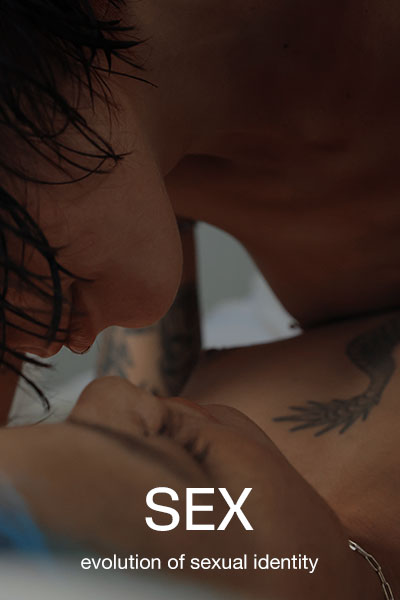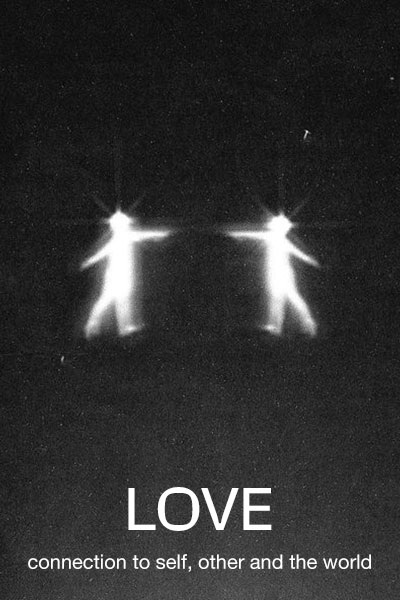Do ‘Polyamory’ and ‘Non-monogamy’ Mean the Same Thing?
Stepping outside the realms of mono-normativity to understand alternative relationship styles
Whether curiosity has piqued your interest, or you’re on a non-monogamous journey of your own, this article should give you (mostly) everything you need to understand what the difference is between polyamory and non-monogamy. This article will also include a glossary of terms to help you understand each definition better.
First and foremost, non-monogamy is a broad term and relationship style that includes consensual dynamics which can be both casual and established—swingers, threesomes, casual sex, orgies to dating, polyamory and so on. Whereas, polyamory is a specific relationship style that focuses on the practice of having more than one consensual interpersonal, sexual or loving relationship at the same time.
When I started this journey 5-6 years ago with my primary partner, there wasn’t a lot of information or representation about non-monogamous relationship structures in the media. There was the occasional pop culture cameo like in Parks and Rec when we meet April’s two gay boyfriends, Ben and Derek—but certainly in the mid 2010s, society wasn’t quite there yet.
While representation is one thing to hope for, education is where we need to start. My introduction to non-monogamy and polyamory came years before I met my partner, as I had friends who were in a triad together. While I was able to watch and learn about the dynamics of their relationship, I believe it was the natural exposure that normalised polyamory for me, eventually becoming a part of my life.
Regardless of what kind of identity journey you are on, building a repertoire of books, podcasts, documentaries to learn from is a great place to start. Similarly, curating your social media feeds to represent WHO you are is another way to get the exposure you might be looking for—especially if you are in the closet about your relationship style.
One great book to get you started is The Ethical Slut by Dossie Easton and Janet W. Hardy. This has been for many non-monogamous alike—a formative guide to relationship styles, terminology and discussions on the topic. It’s not just a “how to” kind of book, but a deeper breakdown of language, experience and cultural perspective. And not just that—it’s a clever reclamation of our own personal sluthoods.
There are also so many advocates online today who share their experiences and point of view on non-monogamy, including sex and relationship therapists, and writers and educators who have paved the way for us non-monogamous folk to have the safe spaces to exist, share and learn in. I want to mention here the platform, Poly Pages. This platform and website provides a wealth of academic analysis on many topics including abuse in polyamory. There is also easy to consume topics, including common questions asked covered on the Tiktok and Instagram run by Claire Travers.
While it can be difficult trying to find all the answers you need, this glossary of terms will help understand common phrases and perhaps set you off on your journey into non-monogamy.
Glossary of terms
Compersion
A feeling of joy you experience for the happiness of others. This applies specifically in polyamory where you are happy for your loved ones’ positive experiences of love, pleasure and new experiences. This term was coined by the Keristan Commune in San Francisco which practiced Polyfidelity before they disbanded in the early 1990’s.
Metamour
Two people who share a partner but are not involved with each other. This includes if you are in a relationship with someone who has a spouse, partner, boyfriend or girlfriend—their partner would be your metamour.
Mongamish
As the word might reflect, it’s someone who is in a couple and is mostly monogamous but are looking to explore other options consensually. I believe this word is particularly used by those who aren’t ready to define their relationship or selves as non-monogamous, polyamorous or open.
Monogamy
A relationship where you only have one romantic or sexual partner at a time.
Non-monogamy (consensual vs ethical)
Non-monogamy as we described earlier is a broad term and relationship style that includes consensual dynamics which can be both casual and established. However, in current times there is much debate whether to describe it as ‘consensual’ or ‘ethical’. Using a quantifier such as ‘ethical’ assumes that non-monogamy on its own ISN’T ethical. This is not at all the case—we certainly don’t call it ‘ethical monogamy’ do we?
Using the term ‘consensual’ is part of a discussion by many poly educators, including Jessica Fern writer of Polysecure – Attachment, Trauma and Consensual Non-monogamy and Poly Pages founder Claire Travers, who writes a very informative article on the topic: ‘Why you should drop the e in ethical non-monogamy’.
Mononormativity
A popular political and psychological narrative whereby monogamy is seen as the superior, most morally correct way to participate in relationships.
Open relationship
An established relationship (often beginning in monogamy, but not always) where those involved have the space and freedom to talk to, flirt with or fuck other people. In these spaces you can often find couples explore threesomes or group sex together, and often engage in their own personal journey into their gender and sexual expression.
Polyamory
The term polyamory is rooted in Latin and Greek: “Poly” Greek meaning many, “amory” Latin meaning love. It was coined in 1990 as “the practice, state or ability of having more than one sexual loving relationship at the same time, with the full knowledge and consent of all partners involved” – coined by Morning Glory Ravenheart Zell.
Primary partner
A polyamorous or non-monogamous person you share your domestic life with—including resources, goals, life paths. Often you live with this person and have established a long-term relationship with them.
Relationship anarchy
A style of approaching relationships where your approach is based on rejecting social norms, expectations and labels. Many people who practice solo-polyamory often view their relationships this way as they aren’t placing a hierarchy of importance on their partners.
Swinging
This style of relationship is also known as partner-swapping—it consists of a couple consensually sharing their partners with another couple. This can happen in a closed/private environment, or in a semi-public space at a swinger’s party where there is a larger group of people to engage with. It is a form of non-monogamy and open relationship style.
Throuple/Triad
A relationship involving three people all who are in a form of relationship with each other.





















